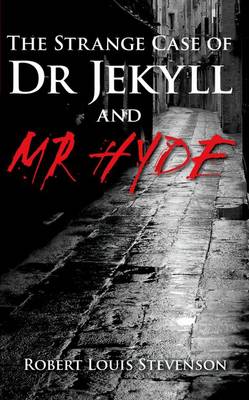Wednesday, 26 February 2025
INSIGHT INTO THE VICTORIAN AGE - 5^C LINGUISTICO
Friday, 22 March 2024
Tuesday, 12 March 2024
THE VICTORIAN NOVEL - 5^C LINGUISTICO
Tuesday, 31 January 2023
CHARLES DICKENS - 5^C LINGUISTICO
Monday, 7 February 2022
Saturday, 26 June 2021
ELIZABETH GASKELL'S NORTH AND SOUTH
Friday, 25 June 2021
GEORGE ELIOT'S MIDDLEMARCH
George Eliot, pseudonym of Mary Ann Evans, was an English Victorian novelist who developed the method of psychological analysis characteristic of modern fiction. Her major works include Adam Bede (1859), The Mill on the Floss (1860), Silas Marner (1861), Middlemarch (1871–72), and Daniel Deronda (1876).
Middlemarch is considered to be George Eliot’s masterpiece. The realist work is a study of every class of society in the town of Middlemarch—from the landed gentry and clergy to the manufacturers and professional men, farmers, and labourers. The focus, however, is on the thwarted idealism of its two principal characters, Dorothea Brooke and Tertius Lydgate, both of whom marry disastrously.
https://www.gradesaver.com/middlemarch
Wednesday, 16 June 2021
BERTHA MASON IN JANE EYRE
Bertha Mason is a complex presence in Jane Eyre. She impedes Jane’s happiness, but she also catalyses the growth of Jane’s self-understanding. The mystery surrounding Bertha establishes suspense and terror to the plot and the atmosphere. Further, Bertha serves as a reminder of Rochester’s youthful libertinism (=the behavior of a libertine, a person who is unrestrained by convention or morality, one leading a dissolute life).
Yet Bertha can be
interpreted as a symbol. Some critics have read her as a statement about the
way Britain feared and psychologically “locked away” the other cultures it encountered
at the height of its imperialism. Others have seen her as a symbolic representation
of the “trapped” Victorian wife, who is expected never to travel or work
outside the house and becomes ever more frenzied as she finds no outlet for her
frustration and anxiety. Within the story, then, Bertha’s insanity could serve
as a warning to Jane of what complete surrender to Rochester could bring about.
Wednesday, 21 April 2021
HAPPY BIRTHDAY, CHARLOTTE BRONTË!
Charlotte Brontë, pseudonym Currer Bell, was born 21 April 1816, in Thornton, Yorkshire, England. Read here.
She is best known for her passionate novel Jane Eyre (1847), the story of an independent young governess who is in conflict with her natural desires and social condition, but she overcomes hardships while remaining true to her principles. It blended moral realism with Gothic elements. The novel gave new truthfulness to Victorian fiction. She later wrote Shirley (1849) and Villette (1853).
https://www.litcharts.com/lit/jane-eyre
Sunday, 28 March 2021
WATCHING JANE EYRE
Jane Eyre is a 2006 television adaptation
of Charlotte Brontë's 1847 novel of the same name. The story, which has been the subject of numerous
television and film adaptations, is based on the
life of the orphaned title character.
A young governess falls in love with her brooding and tormented master. However, his dark past may destroy their relationship forever.
Here you can read Charlotte Brontë's novel online.
https://ling.online/en/videos/serials/jane-eyre/
Thursday, 18 March 2021
HARD TIMES
Hard Times is the tenth novel by Charles Dickens, first published in 1854. It describes nineteenth-century England and satirises the social and economic conditions of the era.
Hard Times is unusual in several ways. It is the shortest of Dickens's novels, only just a quarter of the length of
those written immediately before and after it. Also, unlike all but one of
his other novels, Hard Times has neither a preface nor
illustrations. Moreover, it is his only novel not to have scenes set in
London. Instead the story is set in the fictitious (=fictional,
imaginary) Victorian industrial Coketown, a generic Northern English
mill-town, in some ways similar to Manchester, though smaller.
One of Dickens's reasons for writing Hard Times was
that sales of his weekly periodical Household Words were low,
and it was hoped the novel's publication in instalments would boost circulation
– as indeed proved to be the case.
Since publication it has received a mixed response from critics. Critics such as George Bernard Shaw have mainly focused on Dickens's treatment of trade unions and his post–Industrial Revolution pessimism regarding the divide between capitalist mill owners and undervalued workers during the Victorian era. Read here.
Saturday, 6 March 2021
ELIZABETH BARRETT BROWNING - 5^C LINGUISTICO
Victorian poet Elizabeth Barrett Browning was born at Coxhoe Hall, Durham, England, on 6 March 1806.
Among all female poets of the
English-speaking world in the 19th century, none was held in higher critical
esteem or was more admired for the independence and courage of her views than
Elizabeth Barrett Browning. Emily Dickinson had ecstatically admired
her as a poet and as a woman who had achieved such a rich fulfillment in her
life. Her humanitarian and liberal point of view manifests itself in her poems aimed
at redressing many forms of social injustice, such as the slave trade in
America, the labor of children in the mines and the mills of England, the
oppression of the Italian people by the Austrians, and the restrictions forced
upon women in 19th-century society. Read here.
https://prezi.com/p/dgzumjn9-8zu/elizabeth-barrett-browning/
"How Do I Love Thee? Let Me Count the Ways," or "Sonnet 43" is one of Elizabeth Barrett Browning’s most famous poems. Read here.
Sunday, 21 February 2021
THE VICTORIAN AGE - 5^C LINGUISTICO
Queen Victoria ruled Britain for over 60 years. During this long reign, the country acquired unprecedented power and wealth. Britain’s reach extended across the globe because of its empire, political stability, and revolutionary developments in transport and communication. Many of the intellectual and cultural achievements of this period are still with us today. Read here.
Friday, 24 July 2020
ROBERT LOUIS STEVENSON’S THE STRANGE CASE OF DR JEKYLL AND MR HYDE

Wednesday, 8 April 2020
THE DUALITY OF MAN

Thursday, 18 April 2019
ROBERT LOUIS STEVENSON

Wednesday, 27 March 2019
THE BEST CHARLES DICKENS NOVELS

Saturday, 23 March 2019
Wednesday, 27 February 2019
THE VICTORIAN AGE - 5^C LINGUISTICO
Sunday, 30 December 2018
RUDYARD KIPLING
















